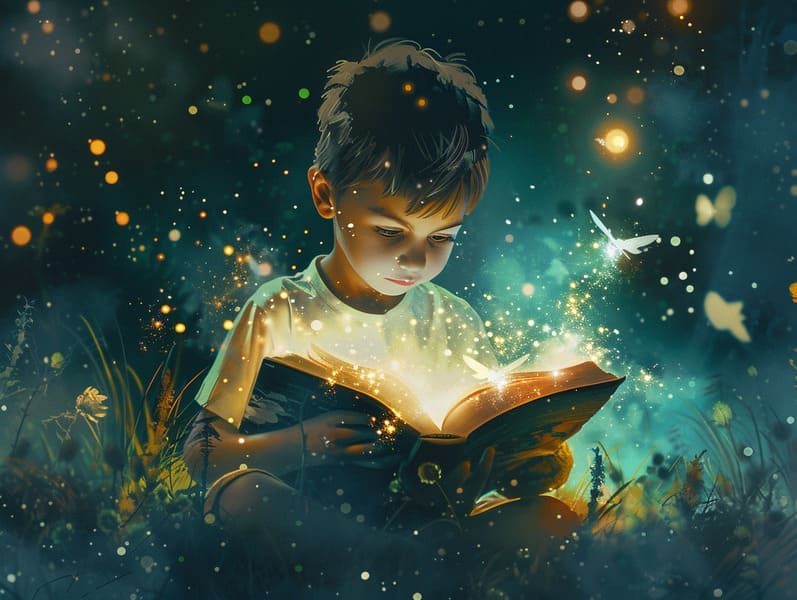The Story Behind Historical Fairy Tales and Its Enduring Loveliness.
The Story Behind Historical Fairy Tales and Its Enduring Loveliness.
Blog Article

Fairy tales have old origins. These narratives have been relayed from one generation to the next centuries before they were ever published. They developed from a variety of traditions, including Middle Eastern traditions. They were initially told among older generations, often carrying themes and messages pertaining to the societal norms and beliefs of the time.
The renowned Brothers Grimm, Jacob and Wilhelm (the Grimm brothers), were among the first to collect and release many of these beloved fairy tales. Their collection, "Grimm's Fairy Tales," included stories like "Cinderella," "The Bread Crumb Trail," and "Snow White," which have since become cornerstones in the world of iconic fairy tales. Similarly, the Danish author's whimsical tales, such as "The Mermaid's Tale," and "The Duckling's Story," have captivated hearts worldwide, ensuring their place in the pantheon of timeless fairy tales.
Though they are old, these tales remain as impactful as ever, especially as nighttime stories for kids. These enchanting tales are now available in many formats, including vibrantly illustrated books, charming animations, and digital fairy tales.
Their lasting presence can be linked to several captivating elements:
Crucial Morals: Old fairy tales often provide important moral lessons. Fairy tales like "The Boy Who Cried Wolf" teach the importance of sincerity, while "The Tale of the Tortoise and the Hare" point out the merits of tenacity and humility. These stories offer young ones clear distinctions between right and wrong, helping to shape their moral compass in a kind yet meaningful way.
Sympathy and Perception: Traditional fairy tales frequently include beings facing problems and hurdles, provoking listeners to resonate with their struggles and applaud their triumphs. For instance, "The Tale of Beauty and the Beast" teaches us the value of seeing beyond the surface to perceive the inner being of a character, promoting insight and discernment.
Cultural Perception: Many timeless fairy tales are saturated in the cultural contexts from which they were born. Understanding these narratives can provide informative snapshots into different cultures, encouraging a sense of cultural insight and understanding.
Inventiveness and Fantasy: The fantastical elements in fairy tales—fairy godmothers—revitalize children’s creativity. These fairy tales carry readers to fantasy realms, inspiring imaginative thinking and a sense of mystery that continues a lifetime.
Traditional fairy tales are not only captivating but also edifying. They provide charming tools in promoting various cognitive and emotional skills in kids. When timeless fairy tales are spoken, they develop language acquisition by offering new words and sophisticated sentence structures. This practice also improves listening skills and attentiveness, as kids listen intently, enthusiastic to see what happens next.
Furthermore, reflecting on the themes and characters of classic fairy tales can sharpen thought processes and critical thinking. Children learn to see patterns, foresee events, and figure out cause and effect. These discussions also advance kids articulate their thoughts and feelings, enhancing their emotional intelligence.
In today’s technological era, the abundance of digital fairy tales has made these stories more reachable than ever. Websites and software extend ample collections of timeless fairy tales that can be perused or heard anytime, anywhere. Fairy tales recited are particularly liked, providing an fun way for kids to experience these mesmerizing stories. Narrated books and spoken videos carry characters and settings to life, often accompanied by bewitching audio effects and tunes that elevate the narrative experience.
The timeless allure of traditional fairy tales lies in their ability to modify to modern society while sustaining their fundamental ideas. Contemporary adaptations of these narratives often present more inclusive characters and modern settings, making them understandable to today’s audience. However, the basic principles of more info bravery, sympathy, and truth remain unchanged, continuing to impact listeners of all ages.
Fairy tales also offer a sense of coziness and homeliness. They make accessible a structured narrative with a clear beginning, middle, and end, often ending with the conclusion of conflicts and the triumph of rightness over wrongness. This reliability can be calming for young readers, presenting a sense of unchangeability in an inconstant world.
Ancient fairy tales continue to charm and teach new generations, maintaining their charm and relevance in modern society. As children's night stories, they confer upon a perfect blend of fantasy and learning, supporting moral values, empathy, and creativity. The proliferation of digital fairy tales and the commonness of fairy tales recited secure that these traditional narratives remain reachable to new generations.
By protecting and circulating these fairy tales, we continue to recognize the rich tapestry of cultural heritage and cultural heritage. Whether you are delving into a vibrantly illustrated book, delving into a internet collection, or listening via an read-aloud book, the spell of classic fairy tales is always within reach. These stories convey of the undying spell of stories and its ability to bond us across centuries and lands.
No matter if you are delving into a vividly illustrated book, accessing a online library, or listening on an read-aloud book, the enchantment of old fairy tales is always within reach.
These stories convey of the ageless impact of storytelling and its ability to connect us across time and space, forging a link that delights and instructs alike.